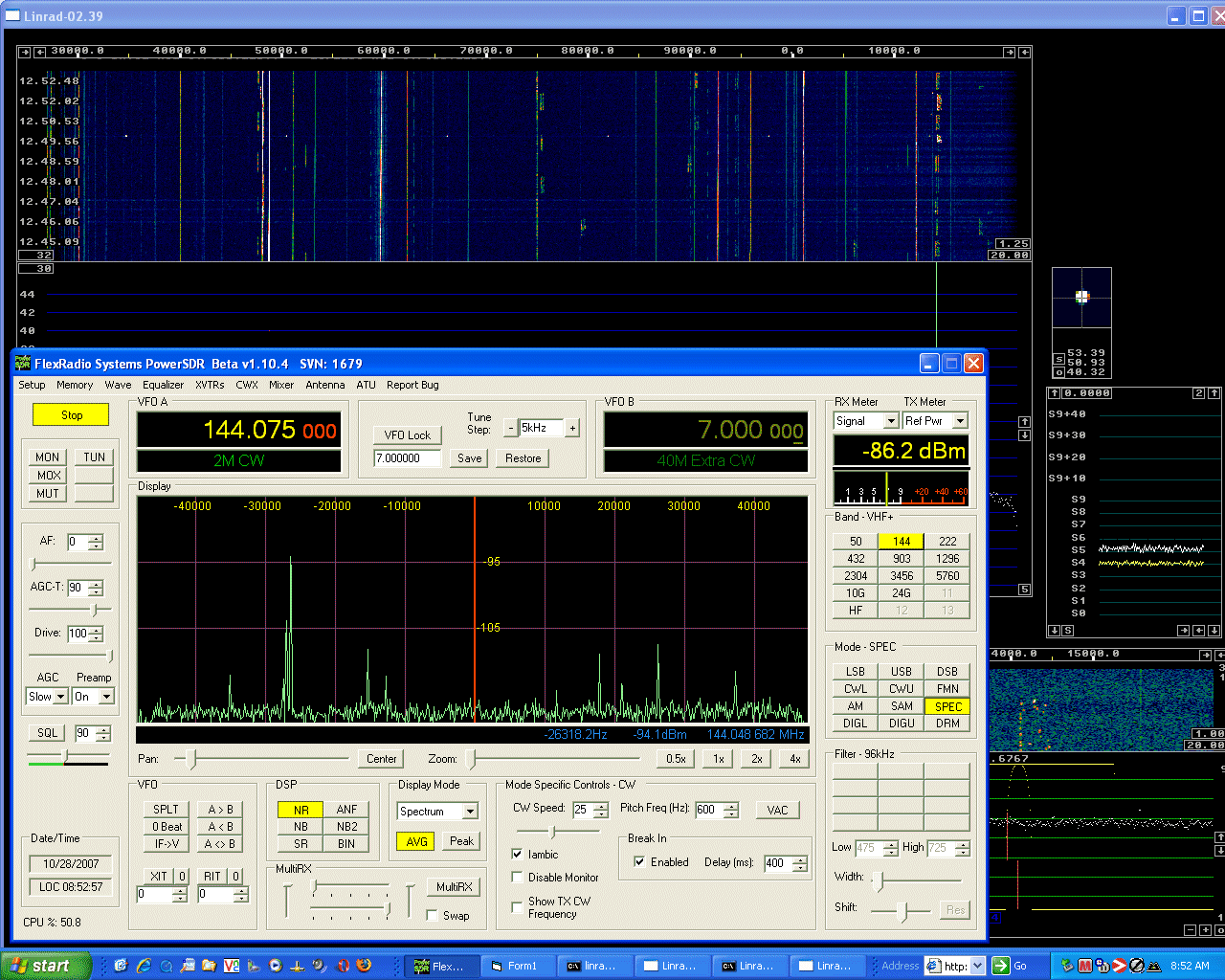

It turned out to be a simple proposition. I just had to place the PowerSDR/Flex5000 combination into SPEC mode by left clicking on the SPEC mode button which is located in the middle of the right side of the GUI. To get the data into Linrad I just had to type "U" from Linrad's main menu to enter the Linrad A/D and D/A setup screen. Then, for Input I just entered "FlexRadio Flex-5000 Audio" for the input, and I selected 96000 Hz sampling rate and 24 bits. Then I selected [2] one rx channel I/Q (direct conversion rx) and for output I selected my onboard sound, Realtek HD Audio output. With that, things came to life. I did not take the time to calibrate Linrad to improve image rejection and allow use of Linrad's smart noise blanker.
I set the Flex 5000 to 144.075 to listen to the CW portion of the band, and 144.125 to listen to the WSJT portion of the band. I sent the audio output from Linrad to another computer where I had WSJT running, to monitor the WSJT activity. I had a switch so that I could compare the output from the Flex5000/Linrad with the output from my FT1000MP both for CW and WSJT copy.
I had a separate instance of Linrad using the WSE hardware as its front end, and the output from that instance of Linrad was sent over the local network to MAP65, an advanced version of WSJT that permits seeing all WSJT signals active on the band at one time.
Here are some pictures, all taken with the Flex 5000 acting as Linrad's front end:
First is a picture of a 96 kHz bandscope that covers from 144.030 to 144.120 MHz, covering the CW portion of the EME band and the lower part of the digital portion of the EME band:

Below is a screen shot of Linrad using the Flex 5000 as input with a 192 kHz bandscope covering from approximately 144.000 to 144.190 MHz. You can see CW signals below 144.100 and WSJT [JT65b] signals above 144.100 MHz. Because of the repetitive nature of the EME signals, they are easy to pick out from the birdies. This was taken near moonset, so there are not very many signals [5 cw signals and 3 JT65b signals]. There were many, many more earlier, before I thought of trying the 192 kHz bandscope. W5UN's CW signal is the signal of interest.

Below is a screen shot of the WSJT portion of the band taken while there was still a fair amount of activity, but with only a 96 kHz sampling rate and thus a 90 kHz-wide bandscope.

Below is a screen shot of the second computer, where I was running WSJT that was fed by the Flex 5000 front-end running at 192 kHz, through Linrad, into WSJT. It decoded the signals excellently. The signal of interest is KB8RQ's JT65b signal.

Copyright 1997-2007 COPYRIGHT Roger Rehr W3SZ. All Rights Reserved